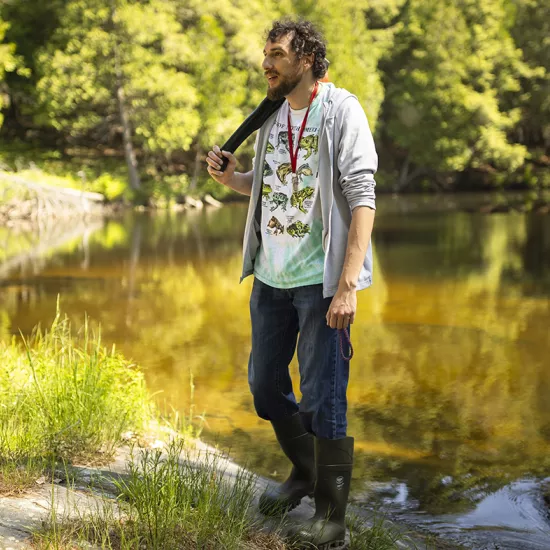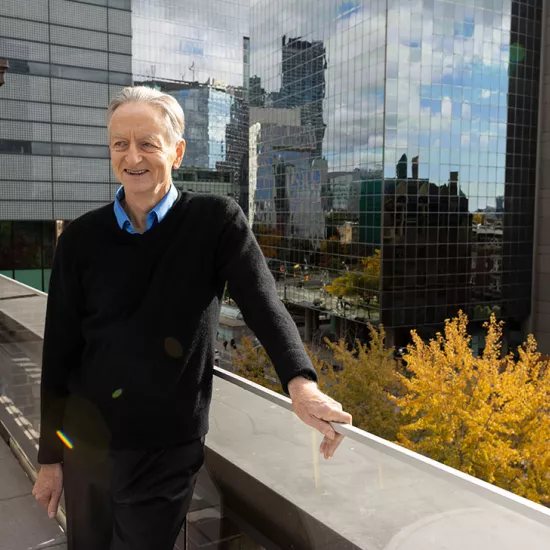Cities need to boost resident knowledge of green infrastructure: UTM study

As climate and weather patterns rapidly shift, the general public has become increasingly aware of personal and policy-based decisions that can help slow global warming — carbon capping and taxing, limiting the use of single-use plastics, and better public transit infrastructure, among them. One of the key tools in mitigating climate change, says Professor Tenley Conway, is green infrastructure. Trouble is, few know what it is.
In a new paper published in Environmental Management, Conway, a professor with UTM’s Department of Geography, Geomatics and Environment, sought to investigate residential knowledge of and engagement with green infrastructure in both Toronto and Philadelphia (both cities have been identified as green infrastructure leaders). She and her fellow researchers found that just 26 per cent of Toronto residents (and 27 per cent of Philadelphia residents) were aware of the term “green infrastructure,” despite the widespread implementation of green infrastructure measures in the respective cities.
Conway is clear, however, that this isn’t the fault of individual city residents. Rather, policy documents – which make liberal use of the term “green infrastructure” – are generally unclear on what the term means, or what it applies to. “These [municipalities] are using different definitions of green infrastructure — and in Toronto, the term ‘green infrastructure’ often isn't clearly defined within a particular municipal document,” she says. “Residents are often identified as key actors in facilitating the green infrastructure goals. [Green infrastructure] is a dominant term or concept used in the urban environmental discourse right now. So, if residents aren't familiar with this term, there may be barriers for them to participate in some of the policy discussions.”
Most Toronto residents — and, indeed, most people — probably know green infrastructure when they see it, Conway says, but are unable call it by name. Green infrastructure is any urban planning measure that seeks to provide environmental, economic, and social benefits; in practice, this can look like green roofs, trees, permeable pavement, rain gardens, bioswales, solar infrastructure and urban agriculture projects. With greater awareness of what urban planners mean when they discuss green infrastructure in municipal planning documents, Conway says locals will be better armed with the ability to more confidently advocate for better or more appropriate green infrastructure in their constituencies.
“Knowledge of an issue is a key criteria to then predict who’s going to take action,” Conway explains. “The more people have knowledge about green infrastructure, the greater the likelihood is that people will take action in support of either installing new green infrastructure or maintaining and caring for existing green infrastructure.”
Conway adds that knowledge of what green infrastructure is — and, further to that, what green infrastructure can accomplish — is integral to enabling communities to understand what they need on a hyper-local level, and in turn to participate in policy discussions advocating for green infrastructure that is tailored to community concerns.
“I think that there's an opportunity for individuals and communities to be able to say, ‘What we really need in our neighbourhood is more trees along our streets,’ for example, or, ‘We know that we have local flooding problems, so we need green infrastructure that can really address that.’ ” she says. “It’s important to make sure people have this knowledge, so they can express what their communities need in a way that enables them to participate in some of these policy discussions.”
Conway and her fellow researchers now intend to dig deeper, uncovering more data on who is already participating in green infrastructure discussions, and why, to better understand where there are knowledge gaps, and what types of specific barriers individuals face in participating in green infrastructure conversations. “Then, we can think about how we can either design new initiatives or modify existing ones to try to reduce those barriers and address or incorporate more residents within those initiatives,” she says.
Conway also notes that she hopes municipalities like the City of Toronto will invest in broader educational campaigns around green infrastructure itself. “If [cities are] adopting goals around green infrastructure, there’s a need for them to explain what it is and why it is so important that we invest in it,” she says.



